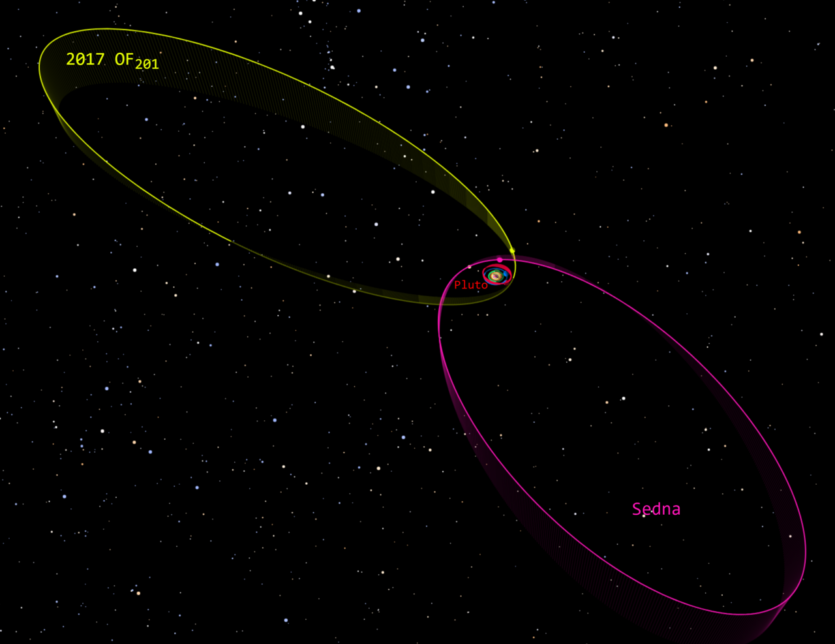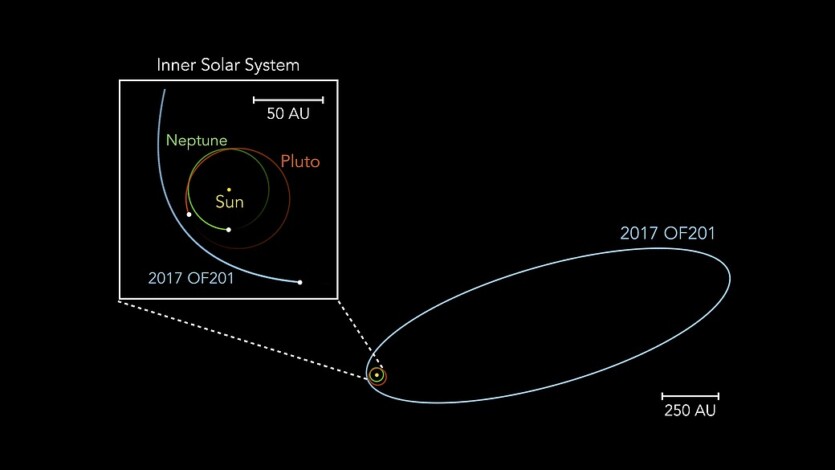
Astronomers have discovered a new tiny planet in the Kuiper belt, which has an unusual very elongated orbit.
The new object has already been named 2017 OF201. The planet orbits the Sun about once every 25 thousand years.
It is noted that 2017 OF201 is spherical in shape and has a diameter of about 700 km. Astronomers discovered the object based on the results of reviewing archival data Blanco telescope in Chile and the Canada-France-Hawaii telescope based in Hawaii. Scientists tracked the object’s motion using data from 19 sets of images taken over 7 years.
The distance of 2017 OF201 from the Sun at its closest point is 45 AU, almost the same as that of Pluto. At the same time tiny planet is as far away from the Sun as possible by 1600 AU.
According to astronomers, the last time this planet came close to the Sun was in 1930. In the same year, Pluto was discovered. This elongated orbit indicates complex gravitational interactions with both Neptune and the gravitational pull of the Milky Way.
«It is possible that this object was originally ejected into the Oort Cloud, the most distant region in our solar system where many comets live, and then sent back», — suggests astrophysicist at the Institute for Advanced Study in Princeton, New Jersey Xihao Cheng.

Because detect objects at such a distance is quite difficult, it is likely that 2017 OF201 — is not the last tiny planet on the outskirts of the Solar System. In addition, the tiny planet may help astronomers to understand the existence of a mysterious ninth planet in the Solar System. According to a number of scientists, the gravity of the ninth planet may explain the unusual orbits of some trans-Neptunian objects.
However, according to other scientists, 2017 OF201 does not fit this model. The researchers suggest that the gravitational pull of Planet 9 — if it exists — will quickly knock 2017 OF201 out of the solar system.
«2017 OF201 spends only 1% of its orbital time close enough to us to be detected. The presence of this single object suggests that there may be about a hundred other objects with a similar orbit and size; they are simply too far away to be detected now», — Xihao Cheng notes.
Astronomers may have found the ninth planet in the solar system
The results of the study were published on the preprint server arXiv
Source: LiveScience

Spelling error report
The following text will be sent to our editors: